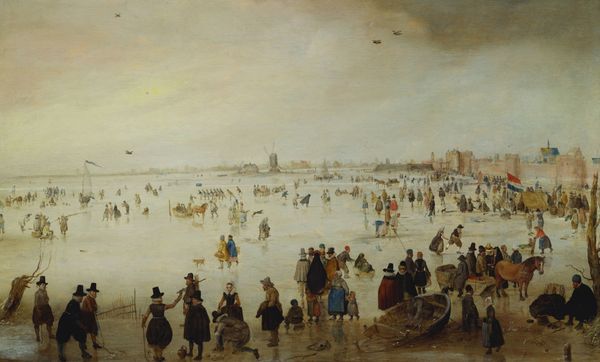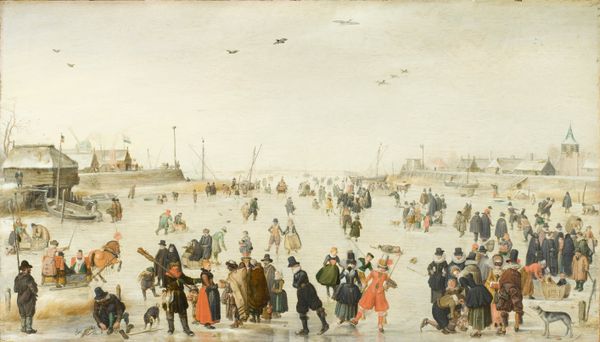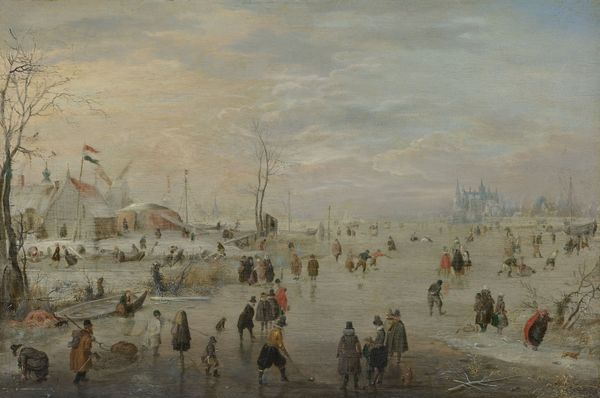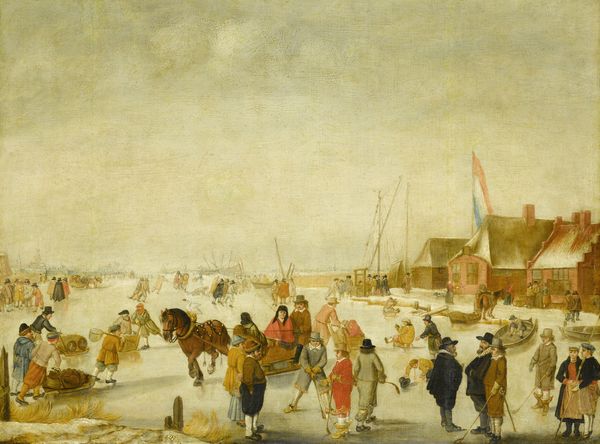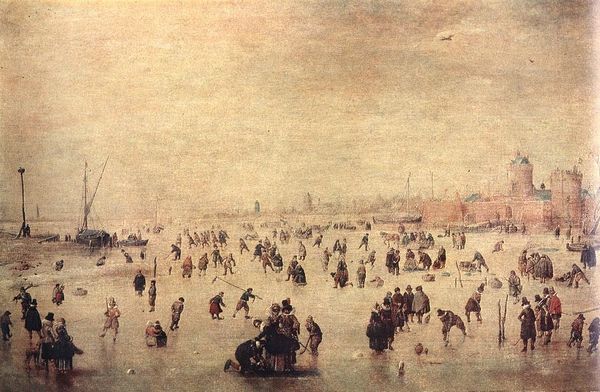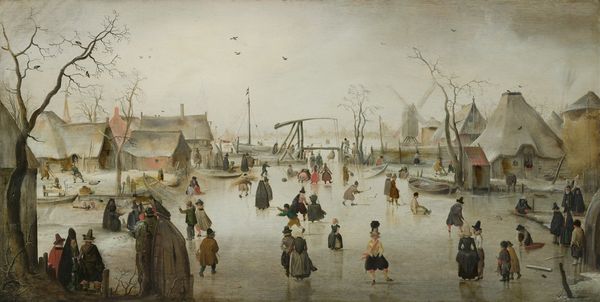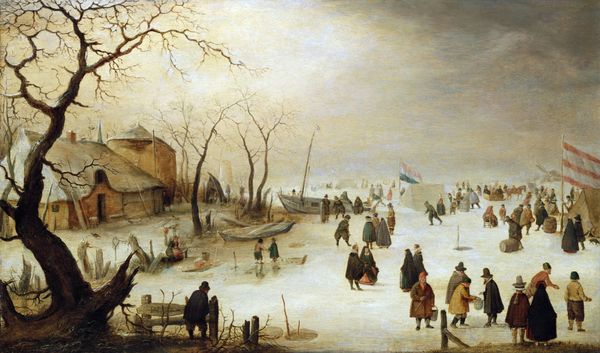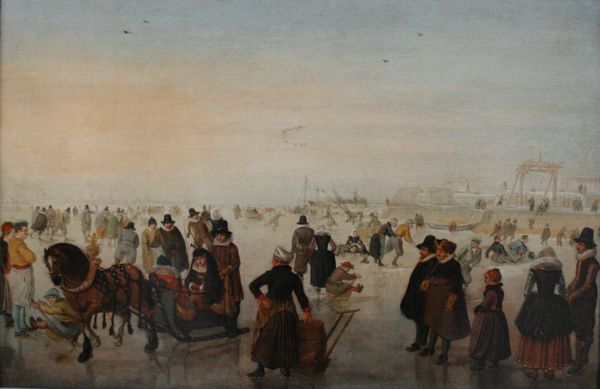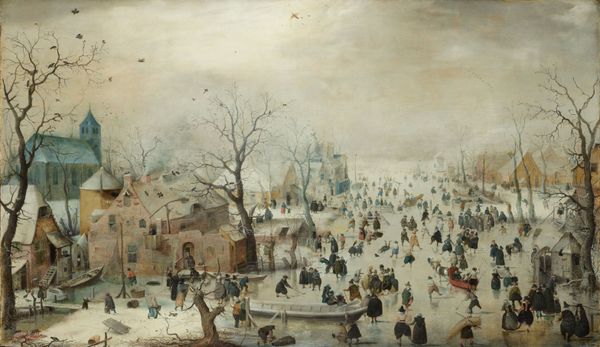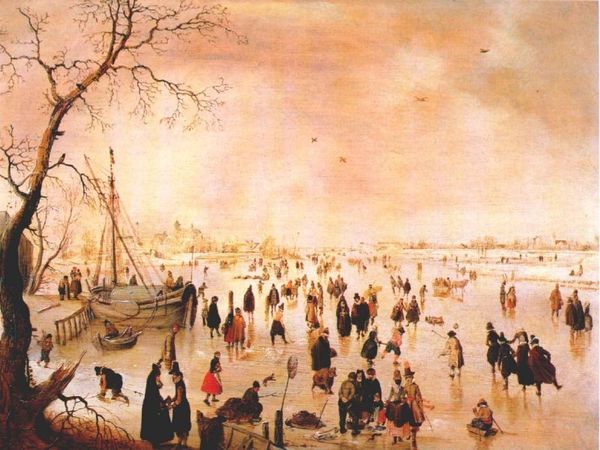
painting, oil-paint
#
baroque
#
dutch-golden-age
#
painting
#
oil-paint
#
landscape
#
figuration
#
oil painting
#
underpainting
#
painting painterly
#
genre-painting
Dimensions: 77 x 39.2 cm
Copyright: Public domain
Editor: This is Hendrick Avercamp's "A Scene on the Ice," painted around 1625 using oil on panel. The details of the figures are incredible, and there's this remarkable atmospheric perspective. How would you approach interpreting this scene? Curator: Considering Avercamp's painting through a materialist lens draws attention to the specific circumstances of its production and consumption. The availability of pigments in 17th-century Netherlands, for instance, directly influenced the palette and the subtle gradations you noticed. But also, think about the social context: was this scene a straightforward celebration of leisure? Editor: I suppose it depends on who the scene was for, right? Who was typically commissioning or purchasing art like this at the time? Curator: Precisely. Genre scenes like this catered to the burgeoning merchant class. It represents an accessible moment for their domestic enjoyment, perhaps subtly reaffirming their own economic status by portraying the everyday lives, and leisurely diversions, of a broad range of individuals in a controlled and consumable format. This contrasts sharply with the exclusive patronage systems of earlier periods, signaling a shift in power dynamics. The panel itself, the oils – they become signifiers of a changing economic landscape. Editor: So, the very materials and techniques used reflect broader societal changes and shifts in power? It makes me wonder how much the availability of materials shaped art, and even art movements. Curator: Absolutely. Consider the later Impressionists and the invention of pre-mixed paints in tubes, or the rise of photography! The means of production are integral to understanding any artwork, beyond mere aesthetics. Even what is ostensibly represented becomes secondary to *how* it’s been made. Editor: That's fascinating, I'd never considered it quite that way. I'm going to pay a lot more attention to the materials artists used from now on! Curator: It's about seeing art as a product of its time in a holistic sense, not just as a representation of it. It is all interwoven.
Comments
No comments
Be the first to comment and join the conversation on the ultimate creative platform.
